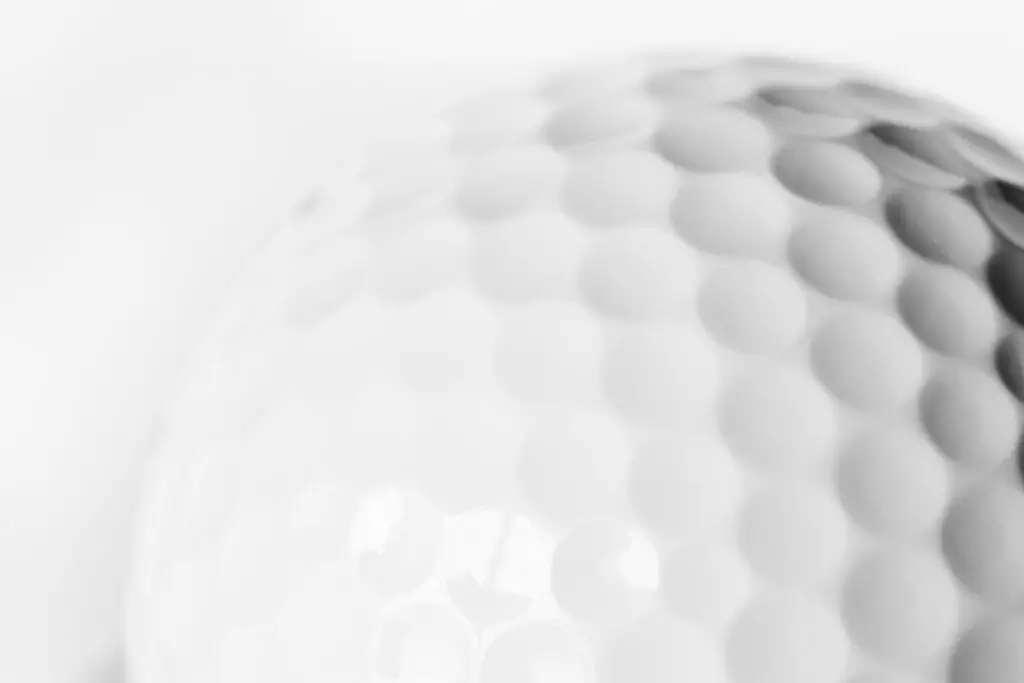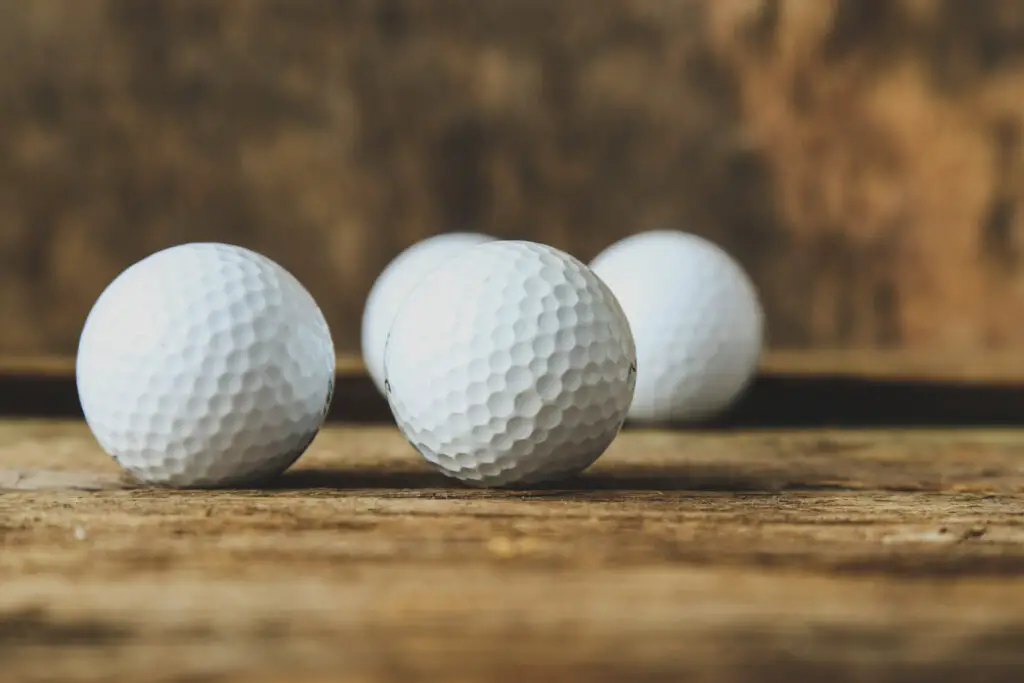Last Updated on November 19, 2023
Golf is a timeless game that has been played for centuries. Throughout the years, golfers have used various tools to perfect their swings and achieve success on the course. One of these tools is the golf ball, which has evolved greatly since its first use in the 15th century. But what were those earliest balls made of? In this article, we’ll explore how early golfers crafted their equipment and discover just what materials went into creating the world’s first golf balls.
In order to answer this question, one must dive deep into the history of golf itself. Golf was first mentioned in Scotland in 1457 when King James II banned it as a distraction from archery practice. It wasn’t until 1502, when an Act of Parliament legalised the sport, before it slowly grew in popularity throughout Europe and beyond. During these times, there would be no modern clubs or balls – only rudimentary items fashioned by hand or with simple tools like knives and scissors.
The very first golf balls created during these ancient days were made from hardwood, such as box trees or even feathers stuffed inside leather pouches – quite different from today’s high-tech spheres! As technology advanced, so did our understanding of aerodynamics which allowed us to create more efficient designs over time leading up to today’s cutting-edge versions. So let’s take a journey through time as we uncover how exactly these primitive pieces of sports equipment were constructed!

Historical Materials Used to Make Golf Balls
In the early days of golf, players used feathery balls. These were made from tightly packed goose feathers that had been wrapped in a leather pouch and stitched together. The resulting round ball was lightweight and flew further when hit with a club than other objects, such as stones or wooden blocks. It wasn’t until 1848 that gutta-percha balls were introduced to the game. This type of golf ball was made of a sap-like substance found in some tropical trees, which could be formed into shape when heated up and cooled down again.
By 1898, manufacturers began using rubber cores for their golf balls instead of gutta-percha. Dimpled patterns on the outer surface of these new balls allowed them to travel further through the air due to reduced drag forces caused by wind resistance. Today’s modern golf balls are often made of surlyn covers surrounding rubber cores. This combination provides more control over spin rates during flight. Golfers now enjoy an even greater range of distance and accuracy when playing the sport thanks to these advances in technology.
Feathery Ball Development
The feathery ball had some drawbacks compared to modern golf balls. It didn’t travel as far and couldn’t be manufactured in mass quantities as today’s balls can. However, due to its long lifespan, the feathery ball was preferred by many professional players at the time because it retained its shape over multiple rounds of play. Over time this type of golf ball fell out of favour as new technology allowed manufacturers to make more advanced models that could go longer distances without losing their shape.
Today’s high-tech golf balls are much more complex than their predecessors and offer superior accuracy and distance along with other features such as spin control and softness characteristics that weren’t possible before. Despite these advances, those who appreciate the game’s ancient roots still look fondly on the humble origins of the feathery-stuffed ball as one of golf’s most memorable developments throughout history.
Gutta-Percha Ball Evolution
The development of the feathery ball had a significant impact on golf history and its evolution. This would ultimately lead to the emergence of gutta-percha balls, which revolutionised the game. Gutta-percha is derived from an Asian tree that produces a natural rubber sap. Golfers found this material superior to leather or feathers in terms of durability and performance. By 1848, factories across Scotland were mass producing these gutta-percha balls for use by players all over Britain.
This period marked a great era for Ball Manufacturing, as many advancements were made during this time. The most notable one was the discovery that heating up the raw material caused it to become more durable and less likely to deform when hit with clubs at high speeds. Companies began making rubber balls out of other materials, such as vulcanised rubber, which proved even more resilient than traditional gutta-percha ones. Even today, some manufacturers still use similar techniques in order to create highly advanced golf balls for modern-day players.
Dimpled Balls and Their Use in the Game
Golf balls have been made from a range of materials over the centuries, but it was only in 1848 that Reverend Adam Paterson revolutionised golf with his invention of the modern dimpled ball. This design provided significantly better aerodynamic performance than its predecessors and allowed for much longer drives. Consequently, this innovation had an enormous impact on the game of golf and is still used today.
The manufacturing process has changed drastically since then as advancements in technology allow for much more detailed designs to be implemented into the production process. Dimples also affect how far a ball can travel when hit by a club, allowing players to control their shots more precisely than ever before. As such, they are now an integral part of any modern golf course or tournament.
As well as improved flight paths and accuracy, dimples offer increased spin rates which further help players achieve desired results when playing golf. What’s more, dimpled balls reduce drag; thus making them ideal for competitions where distance matters most. All these factors mean that dimple patterns play a major role in every aspect of professional golfing nowadays and will continue to do so in years to come.

Rubber Cores and Surlyn Covers
Golf balls had come a long way since their inception when they were originally made from feathers and leather. Today, golf ball technology has greatly improved, with rubber-cored balls being the standard for most players. This impressive shift in materials was thanks to advancements in manufacturing processes that enabled performance enhancement through the introduction of new materials like Surlyn covers.
Here is an overview of why rubber cores and Surlyn covers are so important:
- Rubber-core golf balls offer better distance off the tee than those made of other materials;
- The softness of rubber gives them superior spin control around the green;
- They provide more consistent trajectories due to greater compression on impact;
- Their durability makes them last longer than many other types of golf balls.
The combination of these two features offers an unprecedented level of accuracy and consistency while keeping costs low at the same time. As such, rubber core and Surlyn cover golf balls are now widely used by recreational as well as professional players alike who need top-notch equipment without breaking their bank accounts!
Modern Materials For the Core and Cover
Golf ball technology has come a long way since the days of wooden balls filled with feathers. Today, golfers have access to high-tech polymers and solid core constructions to maximise energy transfer during their swings. Manufacturers use materials such as elastomeric plastics that are durable yet soft enough to provide a good feel when hitting the ball. The urethane coverings used on these modern golf balls allow them to fly further and straighter than ever before while also providing improved spin control around the green. With so many advancements in golf ball design and construction, it’s easy to see why today’s players can achieve longer distances off the tee without sacrificing quality performance from other areas of their game.
Impact on Performance
In the past, golfers weren’t able to control ball performance as much as today due to the limited technology available at that time. Nowadays, manufacturers are creating specialised golf balls with specific characteristics for every type of player, from advanced amateurs to professional players.
| Quality | Impact On Performance |
|---|---|
| Ball Speed | Increases Distance |
| Launch Angle | More Control Over Shot Shape |
| Spin Rate | Improved Scoring Ability & Accuracy Around Greens |
The compression rate of the golf ball has constantly been improved over the years to increase its distance off the tee while maintaining high levels of spin around greens. High launch angles help create more carry and reduce overall roll out when hitting into greens. Additionally, higher spin rates allow golfers to generate better stopping power upon impact with the green surface leading to increased accuracy and lower scores.
Environmental Issues With Modern Golf Ball Production
Modern golf balls consist of several layers, including a core, cover, mantle and paint layer. The cores are typically composed of polybutadiene rubber and metal salts, while covers can range from different types of plastic to ionomer resins or cast urethane elastomers, depending on the desired performance characteristics. In addition, many golf balls contain metals such as zinc oxide which adds additional weight to the ball’s centre for improved accuracy when struck by the club head. While these pieces may feel lightweight enough for play, collectively, they create an unsustainable product with an ever-increasing carbon footprint.
It’s important for golfers and manufacturers alike to become aware of this issue so steps can be taken towards creating sustainable solutions that reduce any potential impact on our environment. Thankfully, there are already promising innovations being developed now that could make modern golf ball production a lot greener in the future without sacrificing performance quality or increasing the cost too drastically.
Frequently Asked Questions
What Is the Difference Between a Feathery Ball and a Gutta-Percha Ball?
Golf enthusiasts have historically debated the differences between a feathery ball and a gutta-percha ball. While both types of balls are used in golf, there are distinct advantages and disadvantages to each.
The first major difference lies in the performance of the ball; while a feathery ball is more responsive due to its high-quality construction and materials, it also has limited distance compared to a gutta-percha ball which offers superior range at the cost of less responsiveness. Additionally, when it comes to production costs, a feathery ball requires far more time and resources than a gutta-percha ball. This makes the latter much cheaper and easier for large-scale production. Lastly, another point of contrast between these two kinds of balls is their lifespan; as the feathers that make up a feathery ball wear out over time, they must be replaced periodically, making them more expensive in terms of maintenance costs. On the other hand, a gutta-percha ball will last significantly longer without needing any additional repair or replacement parts.
Conclusion
The modern golf ball has come a long way since its inception. It was originally made of feathers and leather, but we now have balls that are composed of urethane and titanium cores. The dimples on the surface help to reduce drag in flight, increasing accuracy and distance.
This development has improved the sport exponentially, allowing for more exciting rounds with greater potential for low scores. Golfers no longer need to worry about their ball’s lifespan as these newer models can last up to two years, depending on how often they are used. Additionally, governments around the world have put regulations in place to ensure that production is done responsibly from an environmental standpoint.
I find it fascinating to witness how far golf technology has advanced over time and what it may look like in the future. While we may never know exactly what material will be used next or just how much further distances can go, one thing remains clear: golf enthusiasts everywhere should be thankful for the evolution of the game’s most essential piece of equipment – the beloved little white ball!



